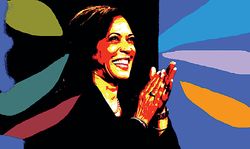When US Vice President Kamala Harris called Prime Minister Narendra Modi and leaders of Mexico, Guatemala and the Caribbean Community to tell them about the dispatch of US vaccines, some permanent critics sniggered that India had been downgraded—suggesting only President Joe Biden should have spoken to Modi. They asked why India was being grouped with less-developed countries despite being a strategic partner.
But Modi had a good conversation with Harris and invited her to the country where her mother hails from. The only counterpart to whom Biden himself conveyed the news was close ally and South Korean President Moon Jae-in. Indian diplomats insisted that there was no breach of protocol as the Indian government understood the dynamics of the new Democratic government—the Biden-Harris administration. Biden was himself vice president for eight years with president Barack Obama.
Like other countries, India knows how important Harris’s role is compared with that of Mike Pence, who was vice president to the more aggressive Donald Trump. Harris has specific roles, is always by Biden’s side at public events and is the last person to advice Biden before an important decision.
American officials see Harris—an influential senator before she joined Biden in the presidential race—as equivalent to heads of state of most foreign countries. She has her own circle of key officials, including a national security adviser and chief of staff. When she travelled to Central American countries on the Air Force Two flight, she was accorded protocol given to a head of state.
In India, the vice president is above the prime minister in terms of protocol, but both the president and his deputy do not have executive powers. Yet, the Indian government insists that visiting US president not only meet the Indian president, but also attend a special banquet at the Rashtrapati Bhavan. Though some US officials grumble about wasting the time of the most powerful man on earth, Indian officials retort that meeting the Indian president is like calling on the Queen of England, who also has no executive powers. While several Indian presidents have been keen on making official visits to Washington, the US government has been lukewarm to the idea, unlike major powers like China, Russia, France and Japan.
When Modi visits the US next, he would be Biden’s guest; Harris is expected to either meet him separately or join the president in the Oval Office. Whenever Harris visits Delhi, her host will be Vice President Venkaiah Naidu, but she would also have talks with Modi.
But pushy Americans insist that even their ministers, known as secretaries, be given a meeting with the prime minister, and this demand is accepted. Thus, new American Defence Secretary Lloyd Austin had a long meeting with Modi, which was more substantive than the session he had with his counterpart Rajnath Singh. But when External Affairs Minister S. Jaishankar was in Washington in May, he only met his counterpart Antony Blinken and other secretaries. There was no meeting offered with Biden or Harris.
However, despite the protocol differences and power perceptions, the two governments have got on well, dispelling anxiety over whether Modi’s special equation with Trump would affect the relationship.
sachi@theweek.in


